Shiva – Hindu God Who Resides In Every Being And In All Things
Angela Sutherland - AncientPages.com - Shiva - the most powerful and the most popular deity of the Hindu pantheon - was associated with many areas of life, but first of all, many believers attributed to him erotic meanings. He is, therefore, a symbol of fertility and creation.
The statue of Shiva as Nataraja at CERN in Geneva. Image credit: Kenneth Lu - CC BY 2.0
The popular belief is that the linga represents the phallus, the emblem of reproductive power in nature. It also symbolizes the cosmic egg and the creation, created by the male and female powers of Nature.
Shiva Linga is a symbol of Lord Shiva and his potential, but it is also an esoteric symbol that represents Truth, Knowledge, and Infinity. It is an ancient mark that points to inference and clearly reminds us of the Omnipotent Lord, which is formless.
According to one myth, when the world suffered periodic destruction, Brahma (the Creator amongst the Hindu Trinity) saw Vishnu lying on the coils of infinity, and smiling. He greeted Brahma with the words: “Hello, my child”. This phrase offended Brahma deeply because he was the creator of billions of worlds and did not anticipate becoming someone's son.
The two began to argue over which of them is more important until unexpectedly a gigantic shining column appeared without beginning or end. They decided to examine its limits. That was thought to end the gods’ dispute.
Left: Five-headed Shiva. Cambodia. Image credit: Mark B. Schlemmer - CC BY 2.0; Right: Shiva as a meditating yogi in Rishikesh. Image credit: Iqbal Mohammed - CC BY-SA 2.0
Vishnu changed into a wild boar and for thousands of years, he searched (unsuccessfully ) for the base of this column. Brahma, on the other hand, took the form of a white goose, rose high, and for a thousand years, he tried in vain to find the upper end of the column. Then, suddenly, Shiva emerged out of the center of the column and declared that only he is the true creator and destroyer of the world. He is a form of himself; he is eternal and exists at different levels of reality.
In the end, Brahma was punished for a lie and his pretending to be the greatest. From now on Brahma has no followers.
Shiva Has Six Heads But Only Five Are Visible
Shiva is the god who destroys the world when it is in a state of chaos. He is also associated with meditation. Shiva usually wears a snake coiled around his neck and sits on a deerskin in a yogic position He has a crescent moon on his head and he holds a trident in the right lower arm; the trident symbolizes the unity of three worlds that a human faces - his inside world, his immediate world, and the whole, much broader world.
It is often not shown but Shiva has six heads, of which only five (Isana, Tatpurusha, Vamadeva, Aghora, Sadyo-jata) are visible while his 6th head - Adhomukh - can only be seen by the enlightened people. His five faces of Sadasiva represent five elements: Earth, Wind, Water, Fire, and Ether.
Shiva Among His Worshipers
His followers try to accept life as it is and do not rebel against reality. According to them, evil exists, but it should not be allowed to dominate.
Shiva is their most prominent deity. The other gods from the great trinity are only his helpers, they are his emanations. In this connection, Shiva is shown as a tree with branches created by Brahma and Vishnu. The great Shiva is Lord of Matter of the World; he rules the nature of the sensual world and creates the world in a cosmic dance as Shiva Nataraja (The Lord of the Dance). It is also said that it has the nature of a man and a woman.
He is also a thousand-eyed because he is attributed to omnipresence, thousands of years, because he possesses extraordinary wisdom, unmoved because he stands like a column.
In addition, he is called Pashupatim, (the Lord of Animals), and also Lord of the Beasts, because he governs over the souls of all creatures.
Written by – A. Sutherland - AncientPages.com Senior Staff Writer
Updated on June 21, 2021
Copyright © AncientPages.com All rights reserved. This material may not be published, broadcast, rewritten or redistributed in whole or part without the express written permission of AncientPages.com
More From Ancient Pages
-
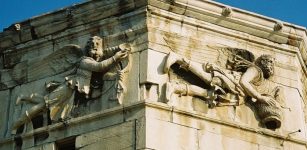 Tower Of The Winds And Daydreaming Of Andronicus Of Cyrrhus
Featured Stories | May 14, 2019
Tower Of The Winds And Daydreaming Of Andronicus Of Cyrrhus
Featured Stories | May 14, 2019 -
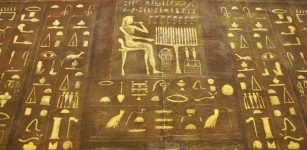 Decipher Hieroglyphs And Ancient Egyptian Images With Google’s AI Fabricius
Linguistic Discoveries | Jul 22, 2020
Decipher Hieroglyphs And Ancient Egyptian Images With Google’s AI Fabricius
Linguistic Discoveries | Jul 22, 2020 -
 On This Day In History: Agatha Christie Known As ‘Queen Of Crime’ Died – On Jan 12, 1976
News | Jan 12, 2017
On This Day In History: Agatha Christie Known As ‘Queen Of Crime’ Died – On Jan 12, 1976
News | Jan 12, 2017 -
 Mysterious Time Slips Near An Ancient Church – Reported
Featured Stories | Oct 23, 2018
Mysterious Time Slips Near An Ancient Church – Reported
Featured Stories | Oct 23, 2018 -
 Tāne: Lord Of The Forest Who Brought Three Baskets Of Knowledge To People In Maori Mythology
Featured Stories | Feb 17, 2025
Tāne: Lord Of The Forest Who Brought Three Baskets Of Knowledge To People In Maori Mythology
Featured Stories | Feb 17, 2025 -
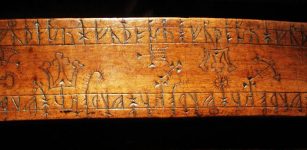 Vikings And The Runic Calendar
Artifacts | Mar 4, 2016
Vikings And The Runic Calendar
Artifacts | Mar 4, 2016 -
 Unusual Viking Secret Hidden Underground In California Reminds Of A Similar Discovery In Colorado
Featured Stories | Sep 12, 2024
Unusual Viking Secret Hidden Underground In California Reminds Of A Similar Discovery In Colorado
Featured Stories | Sep 12, 2024 -
 New Interpretation Of The Domesday Book Of William I The Conqueror
News | Jan 16, 2021
New Interpretation Of The Domesday Book Of William I The Conqueror
News | Jan 16, 2021 -
 Humans Have Been In The Arctic For Over 40,000 Years – New Discoveries Reveal
Archaeology | Jul 12, 2022
Humans Have Been In The Arctic For Over 40,000 Years – New Discoveries Reveal
Archaeology | Jul 12, 2022 -
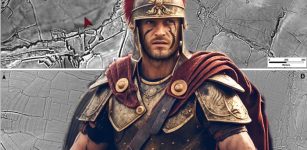 First-Ever Discovery Of Roman Road Network Spanning The South West UK Made By LIDAR
Archaeology | Aug 7, 2023
First-Ever Discovery Of Roman Road Network Spanning The South West UK Made By LIDAR
Archaeology | Aug 7, 2023 -
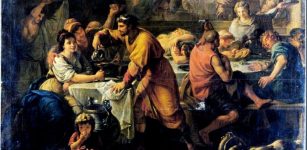 Saturnalia Feasts In Roman Empire
Ancient History Facts | Jun 30, 2018
Saturnalia Feasts In Roman Empire
Ancient History Facts | Jun 30, 2018 -
 Undersea Scans Reveal Astonishing Ancient Submerged World Of The Adriatic Sea
Archaeology | May 11, 2024
Undersea Scans Reveal Astonishing Ancient Submerged World Of The Adriatic Sea
Archaeology | May 11, 2024 -
 Outstanding Unfinished Ancient Marble Carving Of A Lion’s Head Found Near Selinunte, Sicily
Archaeology | Sep 2, 2023
Outstanding Unfinished Ancient Marble Carving Of A Lion’s Head Found Near Selinunte, Sicily
Archaeology | Sep 2, 2023 -
 Massive Bronze-Age Settlement Discovered Underwater in Greece
News | Sep 1, 2015
Massive Bronze-Age Settlement Discovered Underwater in Greece
News | Sep 1, 2015 -
 Latin America’s Oldest Beer Resurrected From 400-Year-Old Yeast
Archaeology | Aug 4, 2022
Latin America’s Oldest Beer Resurrected From 400-Year-Old Yeast
Archaeology | Aug 4, 2022 -
 Symbol of Immortality: Honey Offering In A 2,500-Year-Old Shrine – Identified
Archaeology | Aug 28, 2025
Symbol of Immortality: Honey Offering In A 2,500-Year-Old Shrine – Identified
Archaeology | Aug 28, 2025 -
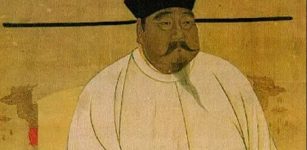 On This Day In History: Zhao Kuangyin Became Emperor Taizu Of Powerful Song Dynasty – On Feb 4, 960
News | Feb 4, 2017
On This Day In History: Zhao Kuangyin Became Emperor Taizu Of Powerful Song Dynasty – On Feb 4, 960
News | Feb 4, 2017 -
 Massive Well-Preserved Second Temple-Era Aqueduct Unearthed In Jerusalem
Archaeology | Aug 29, 2023
Massive Well-Preserved Second Temple-Era Aqueduct Unearthed In Jerusalem
Archaeology | Aug 29, 2023 -
 Zombie-Like Creature In Sami People’s Beliefs: A Frightening, Dangerous Entity That Should Be Avoided At All Costs
Featured Stories | Aug 16, 2025
Zombie-Like Creature In Sami People’s Beliefs: A Frightening, Dangerous Entity That Should Be Avoided At All Costs
Featured Stories | Aug 16, 2025 -
 Secrets Of The Serpent Kingdom Revealed On Maya ‘Game Of Thrones’ Altar
Archaeology | Sep 15, 2018
Secrets Of The Serpent Kingdom Revealed On Maya ‘Game Of Thrones’ Altar
Archaeology | Sep 15, 2018


